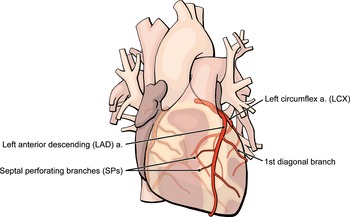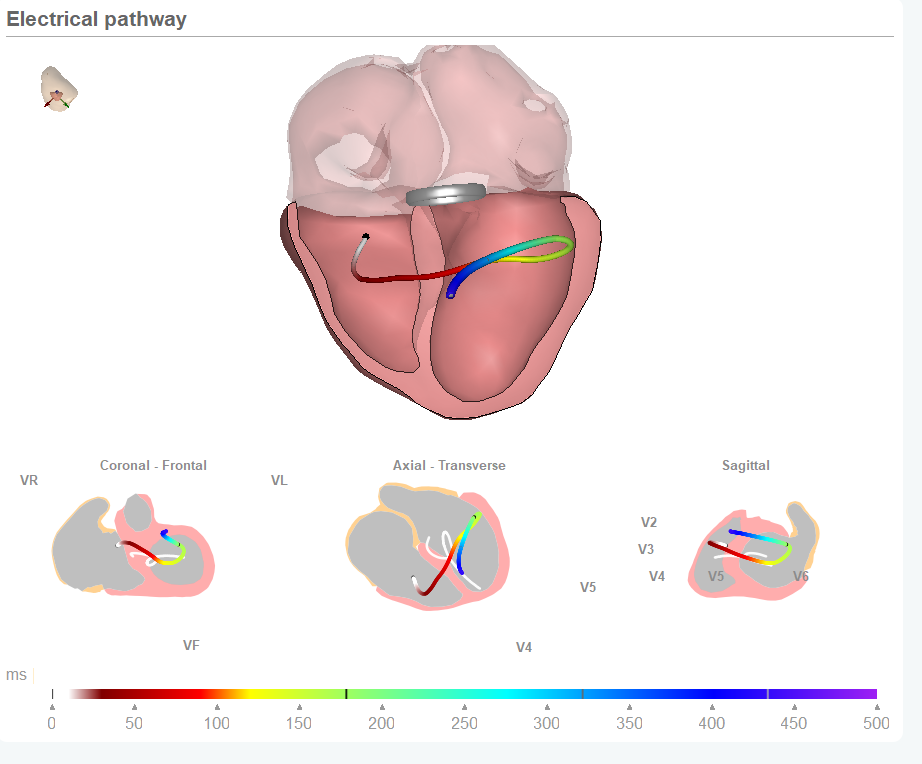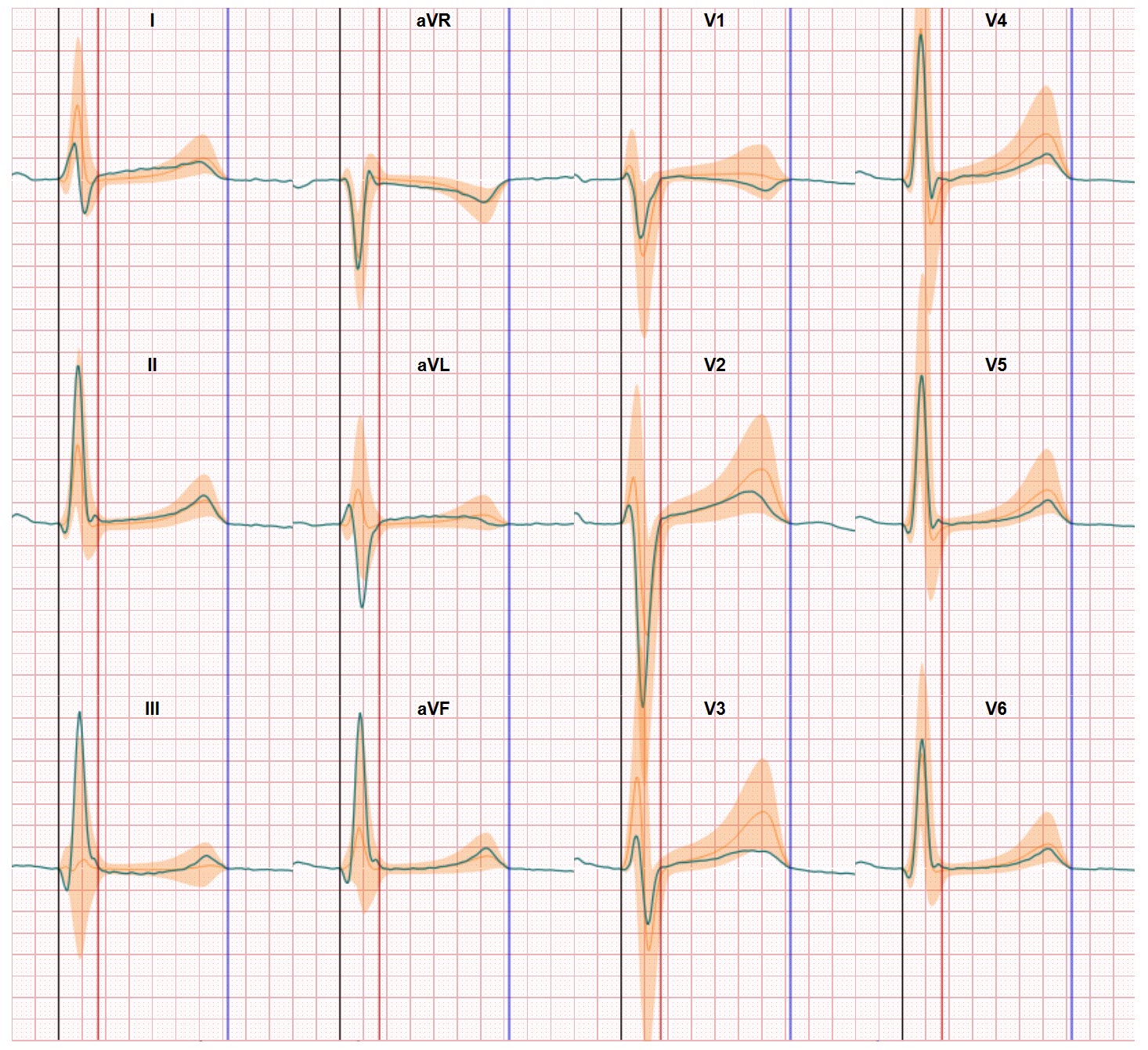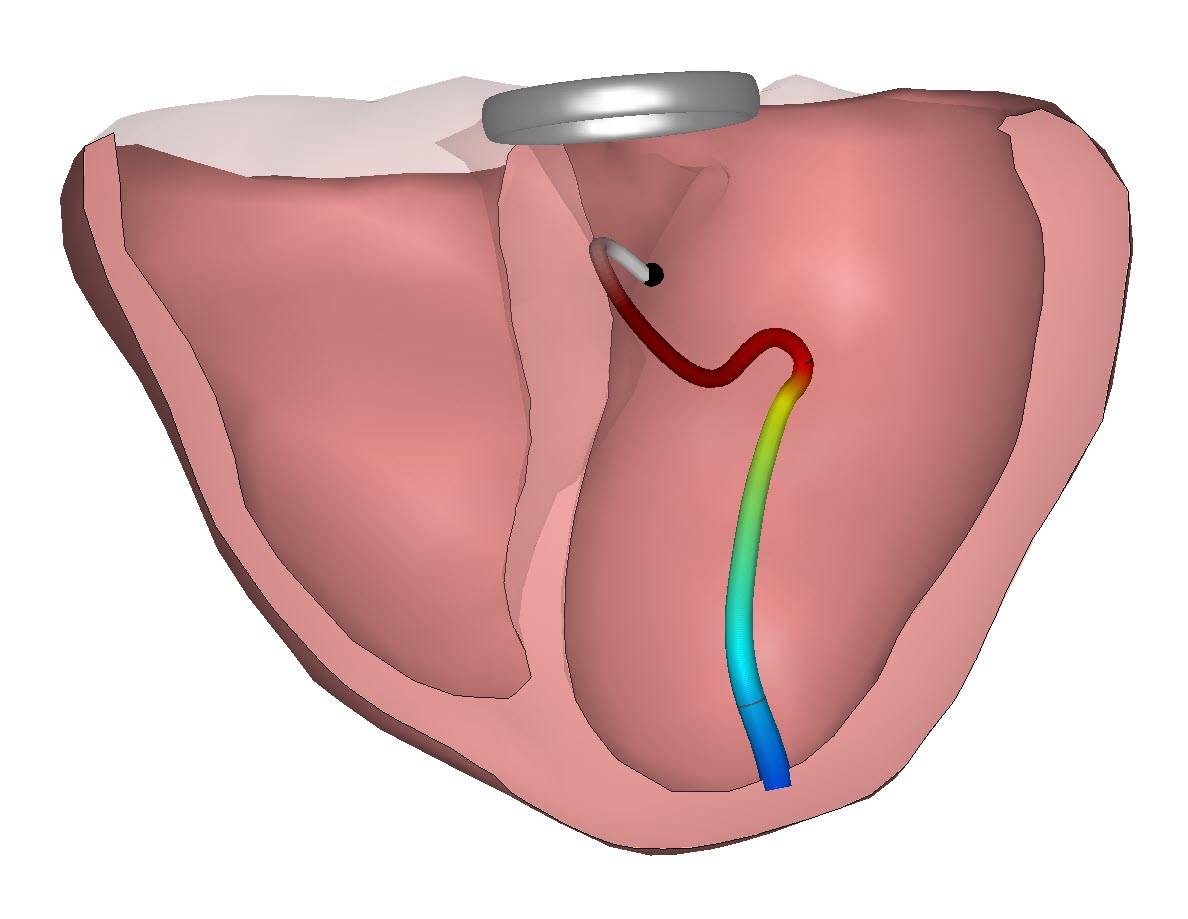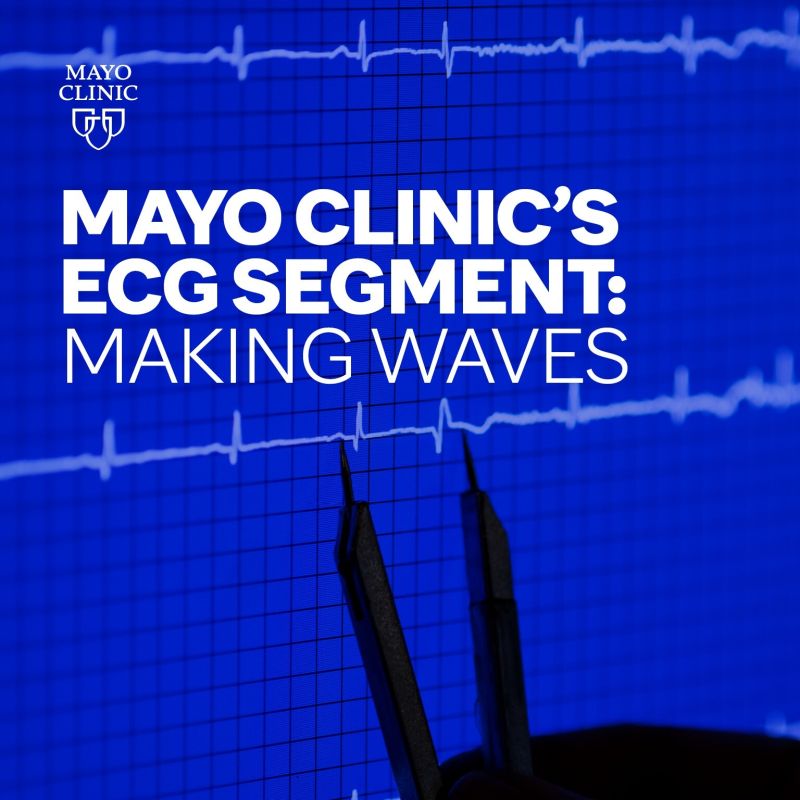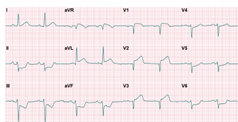
In this blog we will address a case of identifying a specific case of a heart infarct, in particular an infarct in the front part of the heart (Extensive anterior wall infarction).
The infarct happens when there’s a blockage or occlusion in a main artery which supplies this part of the heart with blood. There are many places in the heart where such a blockade can occur and knowing the location as soon as possible is important because the location is an indicator of the severity and extension of the infarct. And thus the type and speed of therapy and intervention needed.

12-lead ECG data is used first to identify the location of the infarct and the way to do it is to look for specific patterns in the ECG graphs. If read correct, the ECG provides the distinct information on which a physician can make a decision and take action. There are many courses and instructions available to learn how to execute the interpretation and for which ECG characteristics one should look (example here). However, not all ECG’s are interpreted correct or provide clear information. Of course a sever infarct will be detected in most cases but when the deviations in the ECG are smaller the assessment becomes more complicated. There are many courses and instructions available to learn how to execute the interpretation and for which ECG characteristics one should look. However, Physicians may decide to wait for more information (take another ECG at a later moment), use other diagnostics methods (a blood test, X-ray, Echo, stress ECG, CRT) or take a closer look inside the artery. But all these other methods prolong the diagnostic time, increase the diagnostic costs and might create irreversible damage to the heart tissue.
CineECG is a new method to look at the same ECG and presents the data in a format which makes the ECG data easier to read and interpret[1]. CineECG shows the average path of the heart activation, visualizing the impact of blockades on this activation, supports the determination of the localisationof the blockade and compares the recorded data with normal healthy values. All to make the ECG assessment more accurate and reduce the need to use other diagnostics methods.
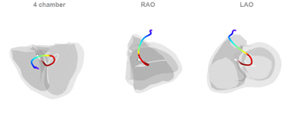
When applying CineECG in the case of an extensive anterior wall infarction (LAD# prox S1; prox D1) the analysis shows distinct deviations from a normal ECG. This is made visible by comparing the mean activation with the normal flow through the heart (shown as a white line in the 3D view / and shown as deviation from a horizontal line in the amplitude analysis. CineECG also indicates the position of the infarct both in the classis leads analysis and in the CineECG delta views.
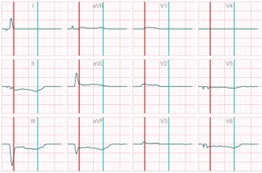
Plus the impact the infarct has on the repolarization (T waves deviate significant from normal and indicates the anterior location of the infarct).
In more detail: in the coronal view (when we look straight at the heart as it was before us if we could look inside the torso) we see the T waves to the front of the heart/body (blue line).
In the 4 chamber view you see the difference between the patient ECG and the normal CineECG which is shown as a white shadow. The CineECG does not follow a normal pattern and the mean activation remains within the septum area, indicating the position of the obstruction.
The two 2D delta graphs of the amplitudes and the movement of the CineECG through the heart support this finding. In these graphs CineECG shows also the deviations from normal. Both for the amplitudes. And in this case we see a terminal QRS deviations from normal in almost all leads and ST elevation in VI-V3 which indicates an anterior infarct.
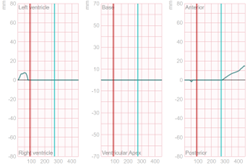
And we see a deviating T-wave direction in the anterior direction in the Anterior-Posterior Graph. Confirming the ST deviations in the delta ECGs.
This way using CineECG makes the identification of an Extensive anterior wall infarction easier and more specific.
[1] CineECG is a computational model system that analyses standard 12 lead ECGs and calculates a range of quantitative parameters based on a mean representative QRS complex to the end of the T-wave. CineECG also produces a graphical 3D output that directly visualizes the temporo-spatial features of the cardiac activation and recovery, and integrates the electrical features with a standardized cardiac anatomical model
